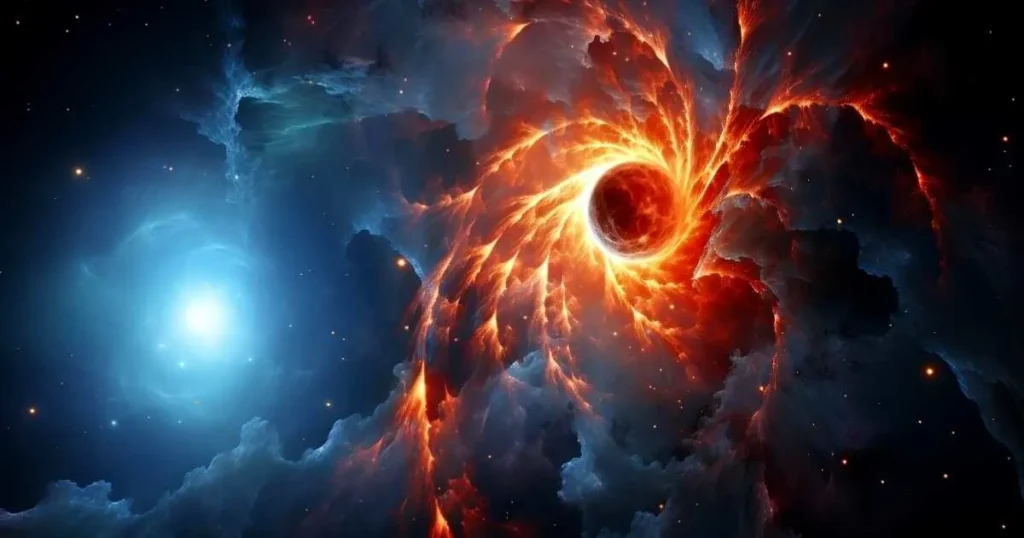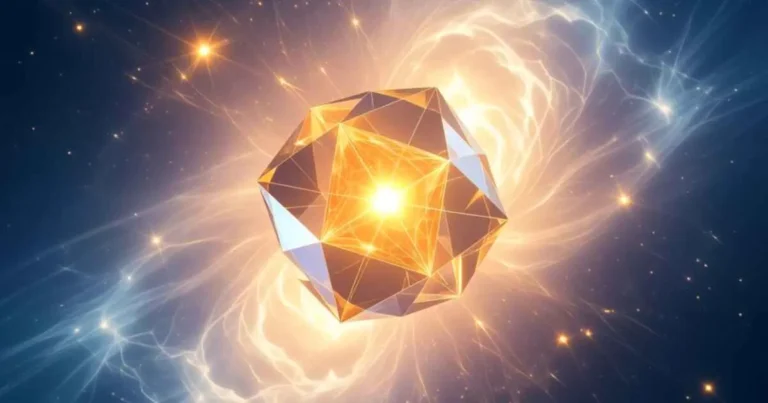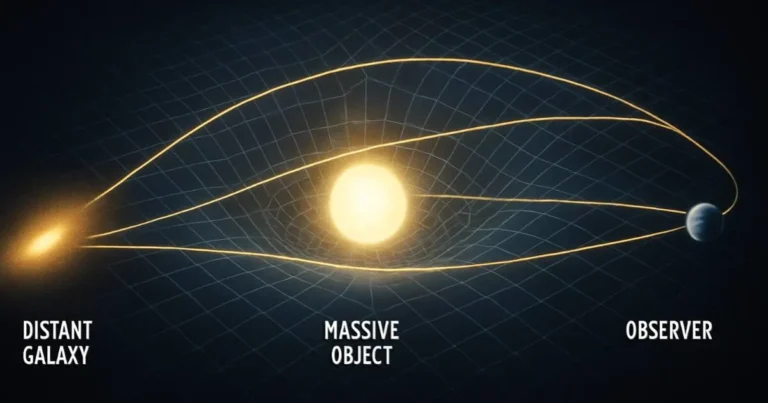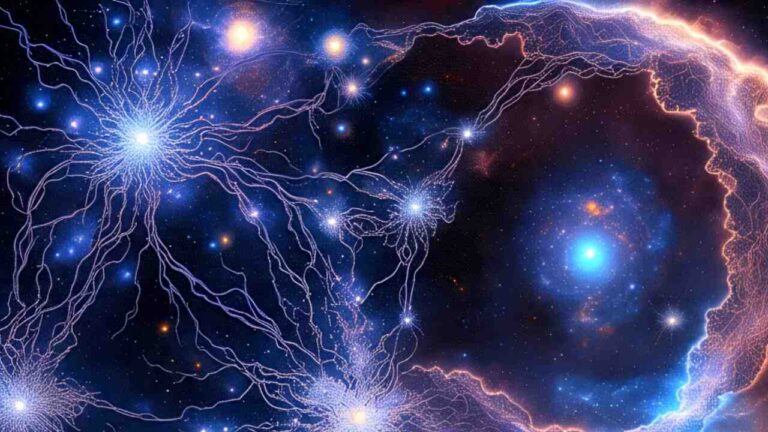Axion Stars: Unveiling the Hidden Dark Matter Stars

Tags:
- Axion Stars
- Dark Matter
Imagine a star made not of atoms, plasma, or even so-called matter, but of a ghostly invisible stuff that might make up most of the universe. Axion stars are one of the strangest cosmological notions scientists ever conjured—mysterious, dark-matter giants that might change what we think we know about the universe. They might manifest as neutron stars on the outside, but inside, they might harbour secrets that could unlock the mysteries of dark matter. This isn’t a “what if” story, it’s a mind-bending quest for one of the universe’s most evasive creations.
What Are Axion Stars?
An axion star is a theoretical form of celestial body consisting solely of axions, particles thought to be one of the best hopes for dark matter explanation. In contrast to the Sun and normal stars, such bodies do not shine by the light of nuclear fusion. Instead, their internal state is supported by a delicate interplay between their own gravity and the quantum properties of axions, producing a dense, compact object. They’re a bizarre form of star that only exists in theory… but the theory is getting real.
Why Axion Stars Matter in Astrophysics
These mysterious objects might be the missing link between particle physics and cosmic structure. If axions are indeed dark matter, they tend to clump into Bose-Einstein condensates, forming compact objects, Axion Stars, that could be hiding in plain sight. Recent 2024 studies from King’s College London suggest these stars might even explode, leaving mysterious signals in the cosmic microwave background.
How Do Axion Stars Form?
Picture the early universe, dense and hot and full of particles colliding with one another. In addition to the usual suspects such as protons, electrons, and photons, there would have been axions, invisible particles with very little interaction with light and normal matter. As the universe cooled and expanded, these axions clung together under the gentle pull of gravity. They did not crash into one another or burn together like atoms in a normal star; instead, they began to overlap in a strange quantum way, more like one wave than an infinite number of distinct particles.
Over enormous timescales, this clump of matter, wave-like in nature, grew denser, its gravity squeezing it into a stable, compact form. Quantum forces held it back from collapsing completely, offering a counterbalance to gravity’s grip. The result: an axion star—dark, quiet, and nearly invisible, yet bound by the very physics that enable it to exist. If such stars exist, they are fossils from the dawn of time, passing through the cosmos in silence, bearing a hidden story about the nature of matter itself.
The Quantum Collapse
Axions are ultralight, but gravity pulls them together over time. Simulations show they can collapse into a coherent object—A Boson Star—supported by quantum pressure, not fusion. Depending on the axion mass, this could take anywhere from 10 million to 1 billion years. Think of it as dark matter compressing into a strange, silent glow. They didn’t collide or fuse like atoms in a normal star; instead, they began to overlap in a strange quantum way, behaving more like a single unified wave than countless individual particles.
The Shadowy Nature of Axion Stars
These strange stars don’t shine, they’re transparent and invisible. A dense axion ball bends light around it, creating a gravitational shadow like a black hole, but without swallowing light. If regular matter falls in, it would glow at the center, revealing its presence—but not easily.
Axion Star Explosions: Cosmic Bosenovas
Some axion stars reach a mass threshold, become unstable, and then explode — a phenomenon known as a bosenova. These violent bursts release energy in the form of radio waves, potentially heating intergalactic gas in the early universe and leaving subtle fingerprints on the cosmic microwave background (CMB). Studies suggest that by looking at the faint 21-cm hydrogen signal across vast stretches of space, astronomers could detect the aftershocks of these events.
In theory, such explosions might also produce brief flashes of high-energy particles or light if they occur near strong magnetic fields, giving us another way to catch them in the act. It’s like invisible stars suddenly igniting in silence, scattering their presence through space and time, and offering rare clues to the hidden matter shaping our universe.
Could We Ever Prove Axion Stars Exist?
Radio Signals from Neutron Stars
When axions pass through neutron star magnetospheres, they can convert into radio photons—a narrow, detectable frequency spike. Instruments like LOFAR (LOw Frequency ARray) or the SKA (Square Kilometre Array) could catch those signals.
Gravitational Wave Clues
There is also a chance axions form “clouds” around rotating black holes via superradiance. That could leave tiny fluctuations in gravitational wave signals detectable by LIGO (Laser Interferometer Gravitational-Wave Observatory) or future observatories.
What’s the Latest Research Saying?
- Darkening the CMB? New models propose axion star explosions contribute to early reionization, subtly dimming the CMB in measurable ways.
- Density Constraints: Cosmological observations from Lyman-α forests and dwarf galaxies place limits on axion mass—thanks to axion star formation theories.
- Detection Experiments: ADMX (Axion Dark Matter Experiment) and CAST (CERN Axion Solar Telescope) are refining axion-photon coupling limits. Meanwhile, new haloscopes (like IAXO (International Axion Observatory) and RADES (Relic Axion Detector Exploratory Setup)) are enhancing our detection toolkit.
Why Do Axion Stars Matter Beyond Dark Matter?
It’s not just about dark particles—it’s about cosmic storytelling:
- Unseen Structures: These stars could hide within cosmic filaments or mimic black holes, adding depth to discussions like those in Cosmic Filaments – The Universe’s Astonishing Neural Network.
- Pushing Cognitive Limits: These objects test how our brains process phenomena that defy everyday experience—similar to themes in The Cognitive Limits of Human Astronomy.
- New Frontiers: From quantum fields to dark star explosions, we’re stretching the boundaries of what “star” even means.
Final Thought: Dark Stars, Brighter Questions
Axion stars feel like whispers of a universe we haven’t yet seen. They blur the line between particle physics and celestial mechanics. If we discover one—through radio glints, gravitational waves, or subtle cosmic heat, it could change everything we know about dark matter and structure formation. At Stellar Illusion, we’re chasing these whispers. They’re what make astronomy thrilling.
Frequently Asked Questions About Axion Stars
- What exactly are axion stars?
- They’re theoretical objects—compact clumps of axions (a type of boson) held together by gravity and quantum effects, sometimes called boson stars.
- How do axion stars form?
- Axions could condense under gravity into a coherent, oscillating structure—either a dilute or dense configuration—balancing self-gravity and quantum pressure.
- Are axion stars stable? Do they decay?
- Some models suggest large, weakly bound axion stars can survive until today, but others may slowly decay via axion emission.
- Could axion stars collapse into black holes?
- Yes. Under certain conditions related to mass and field strength, axion stars might collapse into black holes or disperse entirely.
- How might we detect axion stars?
- Detection strategies include looking for gravitational lensing, impacts in the cosmic microwave background, gravitational wave signals, or bursts of radiation when they pass through strong magnetic fields.
- Could collisions make them explode or decay?
- Yes. If two axion stars merge, the combined mass may exceed stability limits and decay.
- Do axion stars play a role in dark matter halos?
- They might. Some theories suggest axion stars could exist at the centers of dark matter halos and help shape galactic structure.
- What’s the difference between dilute and dense axion stars?
- Dilute axion stars are spread-out and dominated by gravity; dense ones are tightly packed and heavily influenced by axion self-interactions.
Comments
Please log in to leave a comment.
Related Posts

Unlocking Time Crystal Behavior in Neutron Stars
Neutron stars may hold the strangest secret yet: time crystals, repeating not in space but in time. If proven, this idea could rewrite physics itself.

Gravitational Lensing: The Astonishing Cosmic Magnifier
Explore how gravitational lensing bends light, magnifies distant galaxies, and reveals dark matter—unlocking the secrets of the cosmos.

Cosmic Filaments – The Universe’s Astonishing Neural Network
Explore cosmic filaments, the universe’s neural network connecting galaxies. Discover how the cosmos mirrors the structure of the human brain.